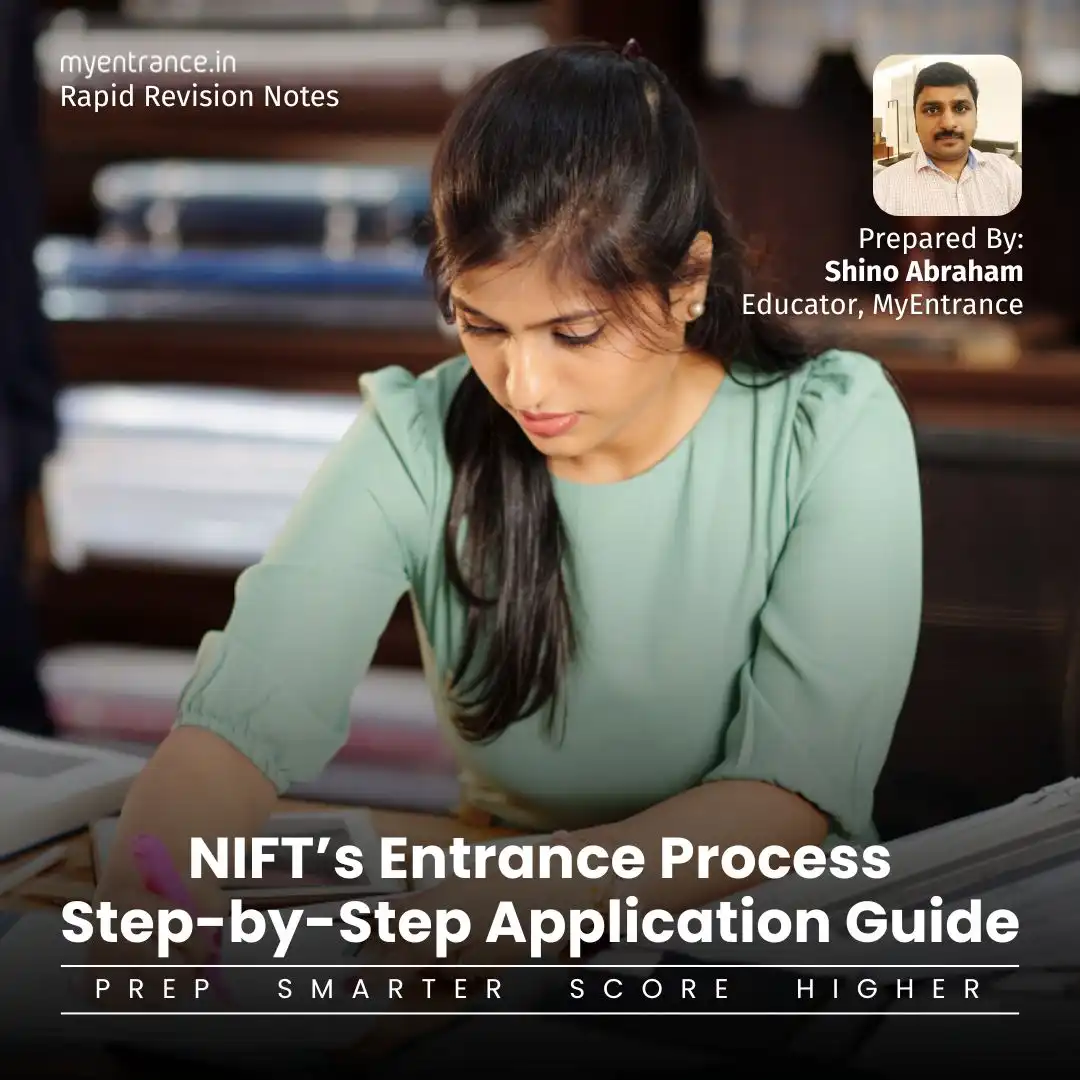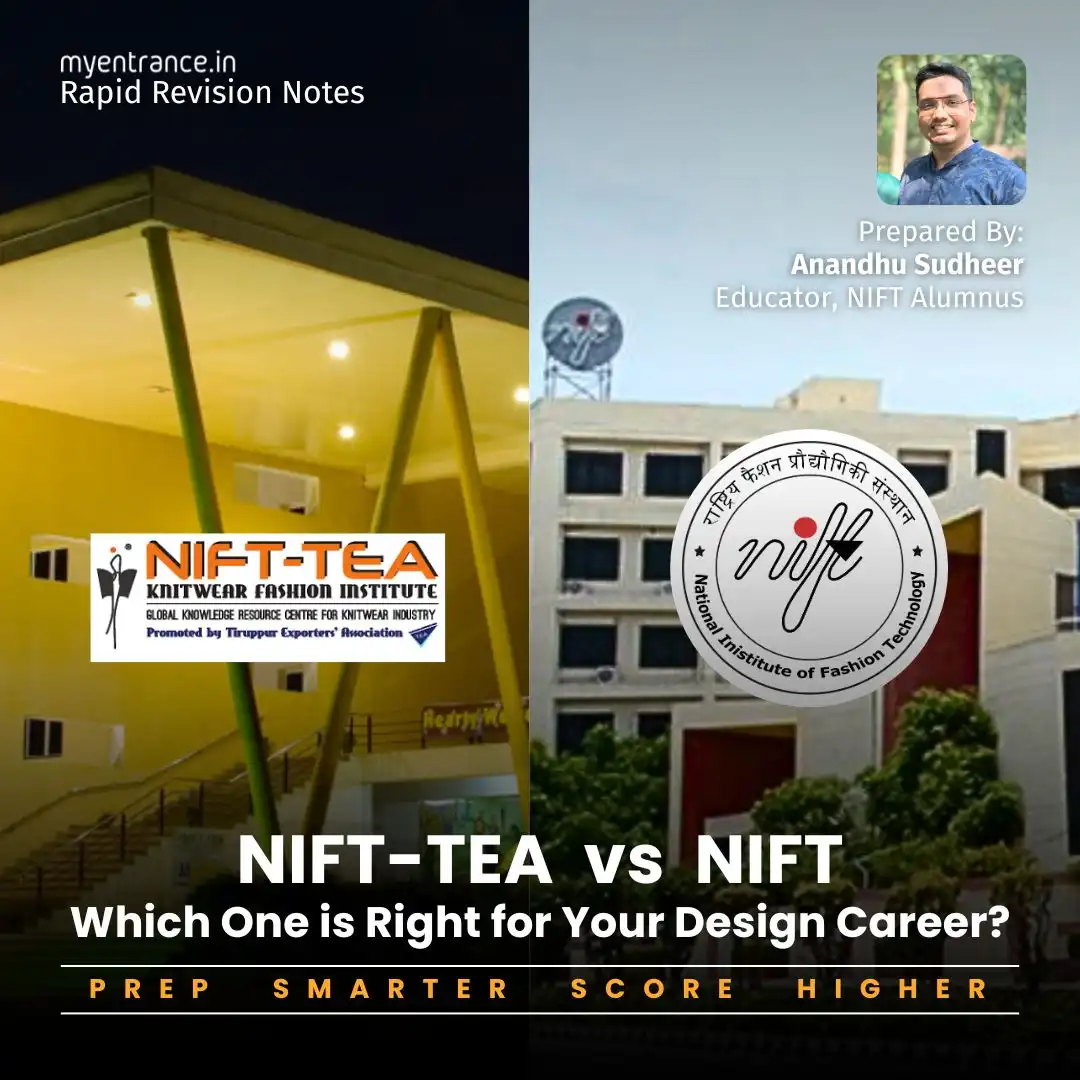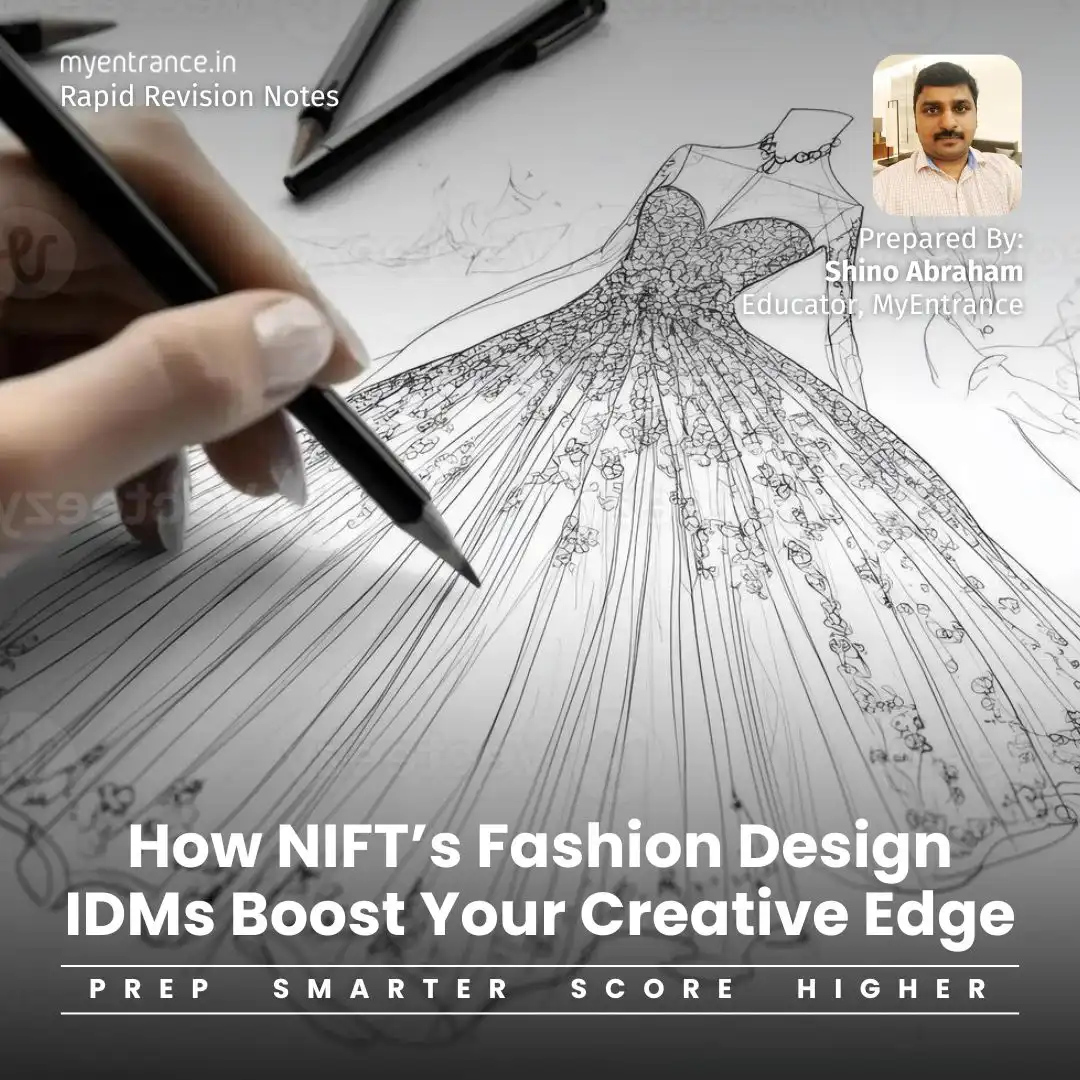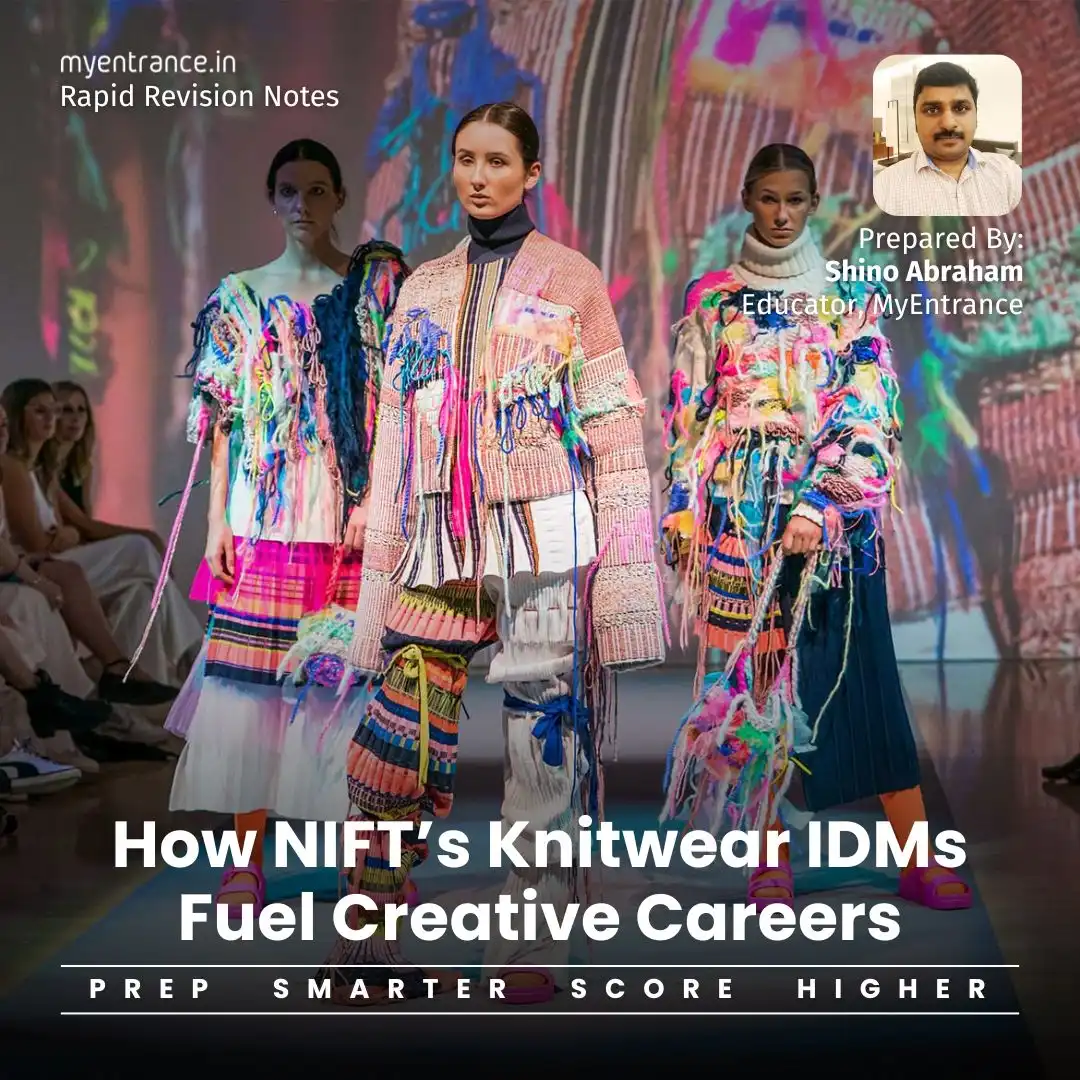Select Language
Master the 7 Elements of Design for NID, NIFT, UCEED & More – Complete Guide!
Mastering the 7 Elements of Design is crucial for success! This complete guide breaks down each concept with easy preparation tips, real-world examples, and exam-focused insights to help you crack your test. This complete guide, prepared by Anandhu Sudheer (Educator & NIFT Alumnus), explains how Elements of Design simplify your creative process, making exam preparation easier and more effective.
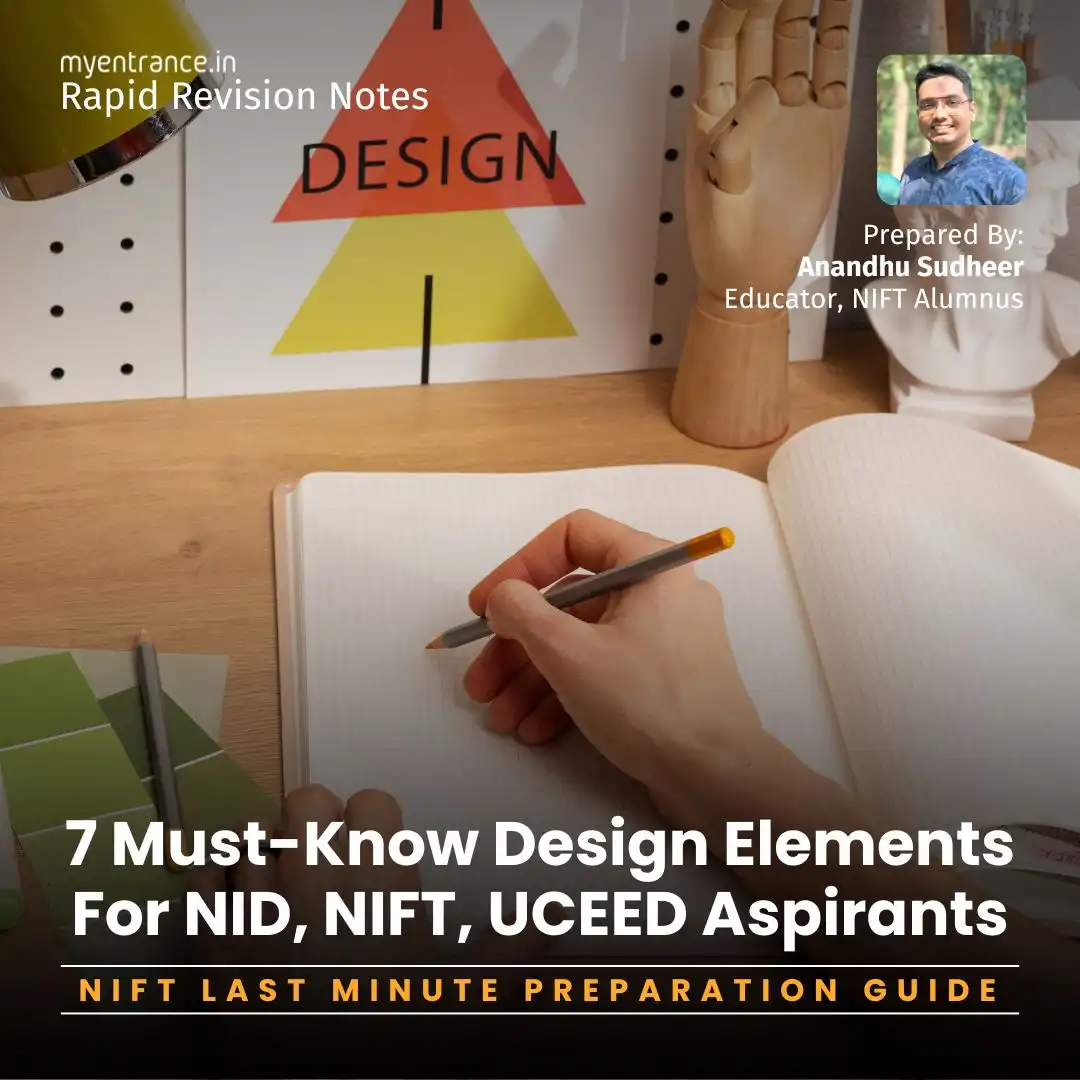
Understanding the 7 Elements of Design isn’t just theory—they shape everything from logos and posters to product packaging and digital interfaces. In NID, NIFT, and UCEED exams, you’ll face questions on how these elements create balance, contrast, and visual appeal in designs.
For example: Lines guide the viewer’s eye in a poster. Negative space makes logos memorable (like the FedEx arrow). Color psychology influences branding (red = energy, blue = trust). Mastering these concepts helps you analyze famous designs, sketch better, and solve creative problems—key skills for acing your entrance exam!
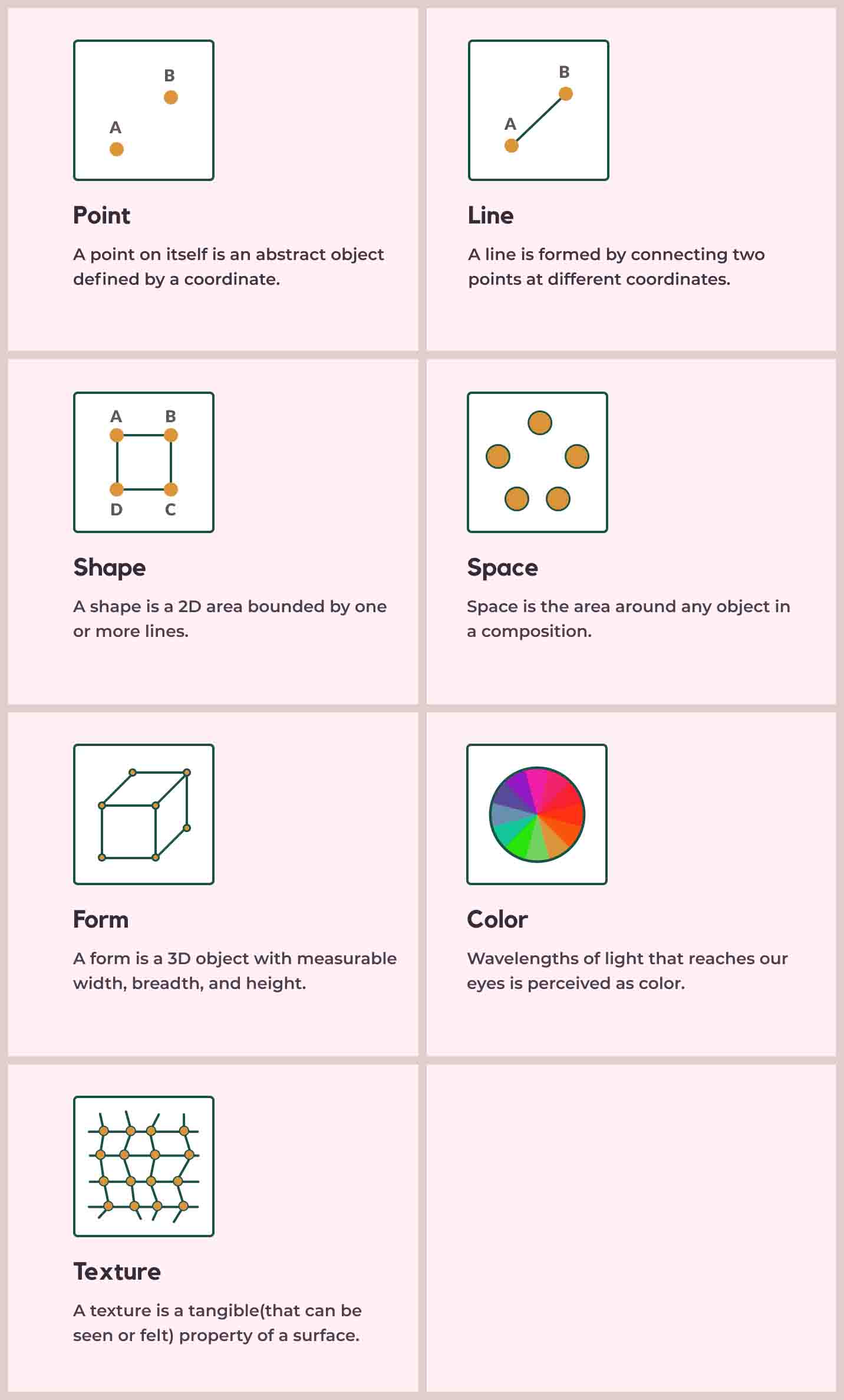
The 7 Elements of Design – Explained for Exam Success
1. Point
What it is: The simplest design element—a single dot in space.
Why it matters:
Acts as a focal point in compositions.
Forms the basis for lines, shapes, and complex structures.
Exam tip: Questions may ask about its role in logo design or visual hierarchy.
2. Line
What it is: A connection between two points, with varying thickness and direction.
Types:
Vertical (strength, stability)
Horizontal (calmness, balance)
Diagonal (movement, tension)
Curved (fluidity, softness)
Exam application: Often tested in sketching rounds (e.g., NIFT’s ability to convey emotion through lines).
3. Shape
What it is: A 2D enclosed area (like circles, squares, or organic forms).
Types:
Geometric (precise, structured)
Organic (natural, free-flowing)
Abstract (simplified representations)
Why it’s important: Used in logo design, posters, and layout planning—common in NID’s studio test.
4. Form
What it is: A 3D object with depth (real or implied through shading).
Examples: Cubes (geometric), human figures (organic).
Exam relevance: Critical for product design (UCEED) and spatial ability tests.
5. Texture
What it is: The surface quality (rough, smooth, implied).
Types:
Tactile (real texture)
Visual (drawn texture, like fur in sketches)
Exam tip: Helps in rendering tasks (NIFT’s material interpretation).
6. Space
What it is: The area around, between, or inside design elements.
Positive vs. Negative Space:
Positive: Main subject (e.g., a logo).
Negative: Background (e.g., FedEx’s hidden arrow).
Why it’s tested: Key for composition and layout design (NID’s DAT).
7. Color
What it is: Light wavelengths perceived by the eye.
Key terms:
Hue (color name)
Saturation (intensity)
Lightness (brightness/darkness)
Exam importance: Used in branding, UI/UX (UCEED), and emotional impact questions.
Why This Matters for Design Entrance Exams
NID/NIFT: Tests sketching, composition, and design theory—knowing these elements boosts scores.
UCEED/CEED: Focuses on spatial reasoning, visualization, and problem-solving—mastering form & space is key.
FDDI: Emphasizes material textures and product design—texture & form knowledge helps.
Common MCQ Topics: Definitions, real-world applications (e.g., “Which element creates depth in 2D art?” → Form).
Sample Exam Questions & Answers
Q: Which element is the foundation of all design?
A: Point (the simplest element that forms lines and shapes).
Q: What type of line suggests dynamism?
A: Diagonal (creates movement and tension).
Q: Negative space is best demonstrated in which famous logo?
A: FedEx (hidden arrow) or Apple (bite mark).
Q: How does texture enhance a design?
A: Adds realism, depth, and tactile interest (e.g., product packaging in FDDI).
Q: Which color characteristic refers to purity?
A: Saturation (high saturation = vivid colors).
How to Smartly Prepare for Design Exams in Less Time
Use Predicted Questions: MyEntrance.in provides most expected questions—practice these to save time.
Last-Minute Prep: Check MyEntrance’s crash courses for quick revisions.
Daily GK & Current Affairs: Follow MyEntrance’s updates—design exams often include trending topics.
Sketch Daily: Even 15 minutes of line, shape, and shading practice helps.
Mock Tests: Simulate exam conditions with MyEntrance’s timed tests for better time management.
Most Predicted Questions
Comprehensive study materials, Expert-guided tips & tricks, Mock tests and instant results.
Start your Design journey today with MyEntrance, your ultimate online coaching platform.

